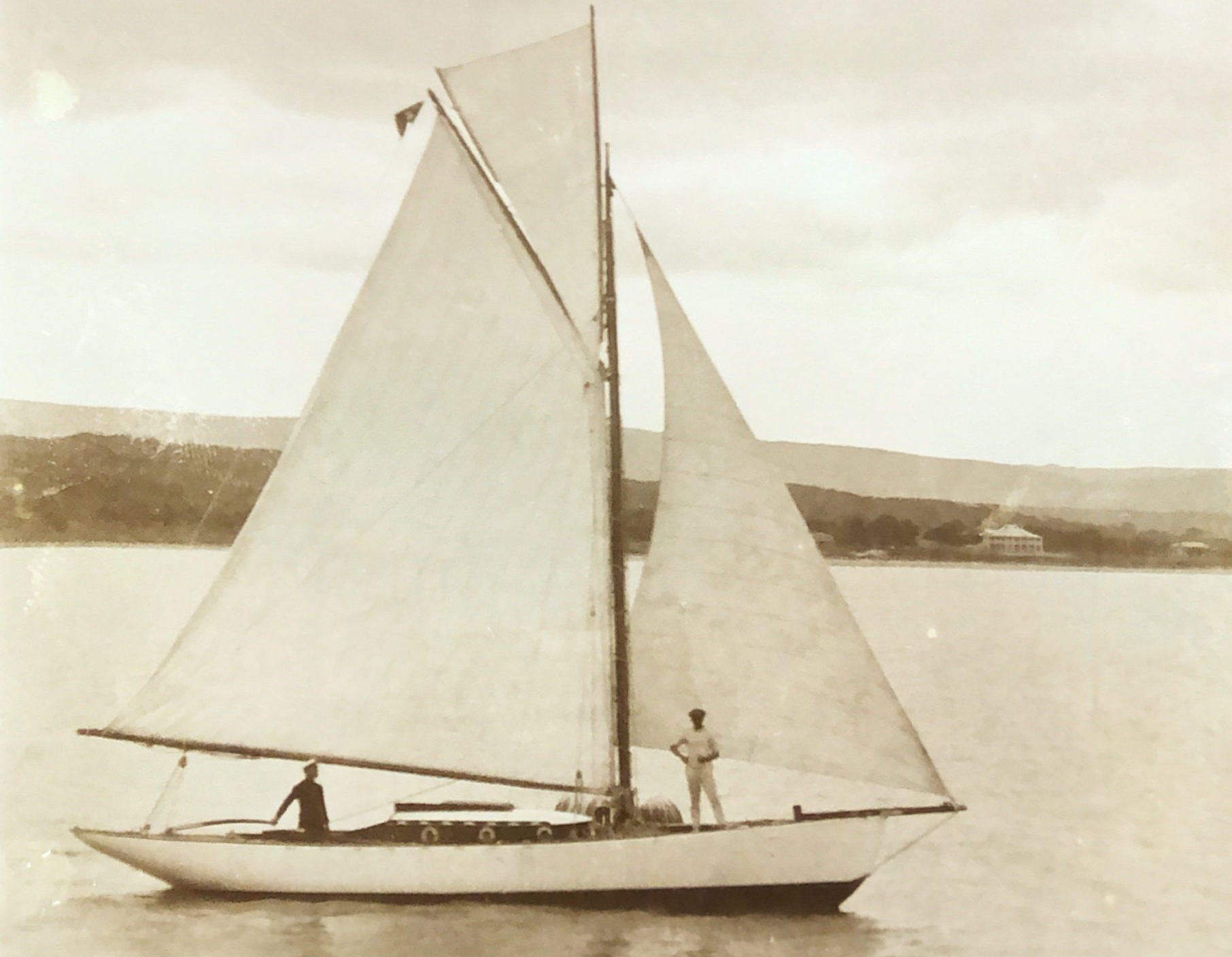After a break from December 2020, with a focus on work for myself and Linda, and Ferdi and his team keeping other projects moving, we got back into Wyruna in early May. I have taken six weeks off my day job, to help the professionals progress a task well beyond my knowledge and skills. It has been fantastic so far, two weeks in.
We are devoting time towards the actual work as much as possible, so I’ll likely come back to this later, but for now include a few images of activity for the two weeks from 3 May to 14 May 2021. But first, the outlook on arrival at Williamstown on several mornings.
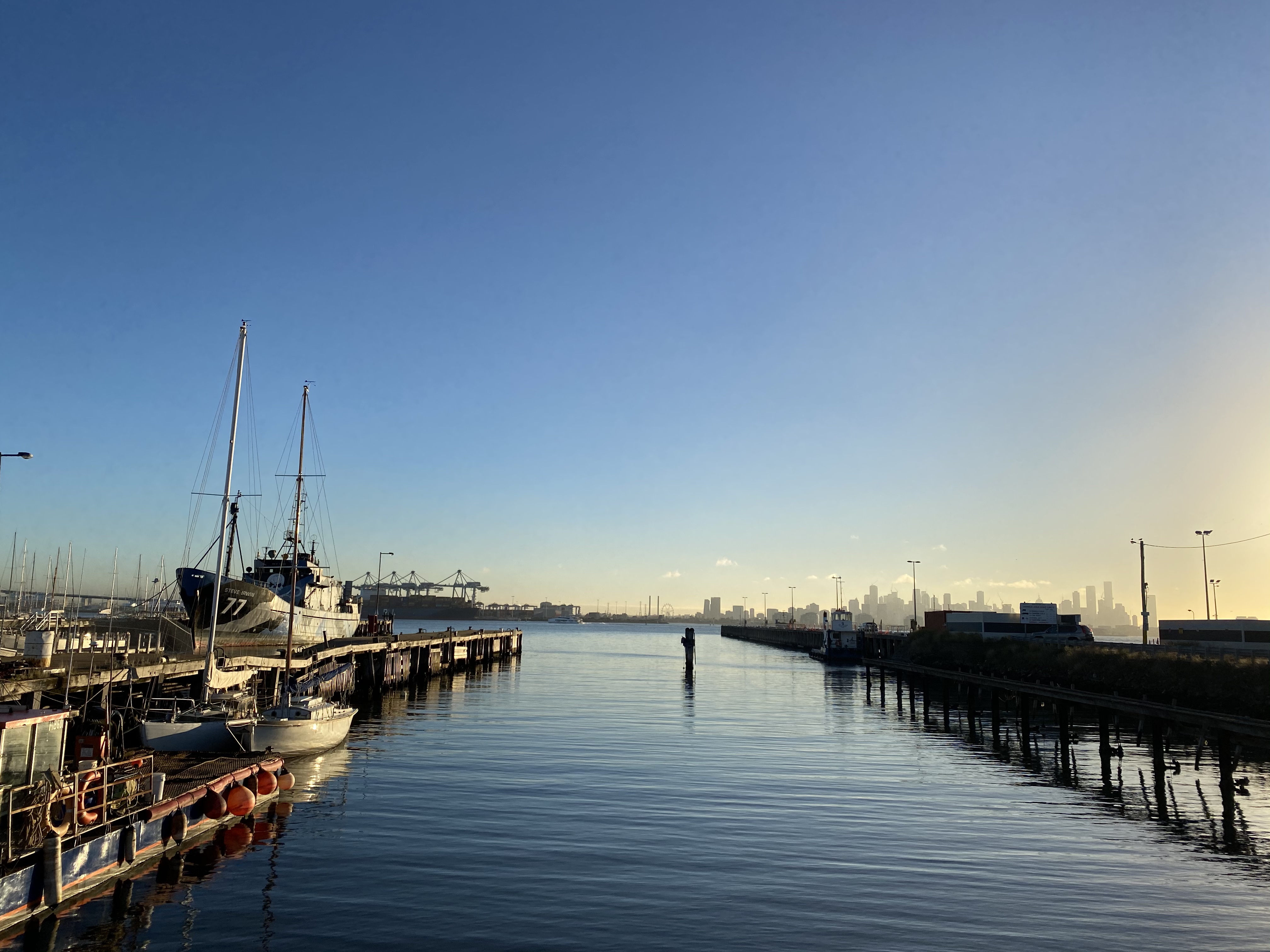
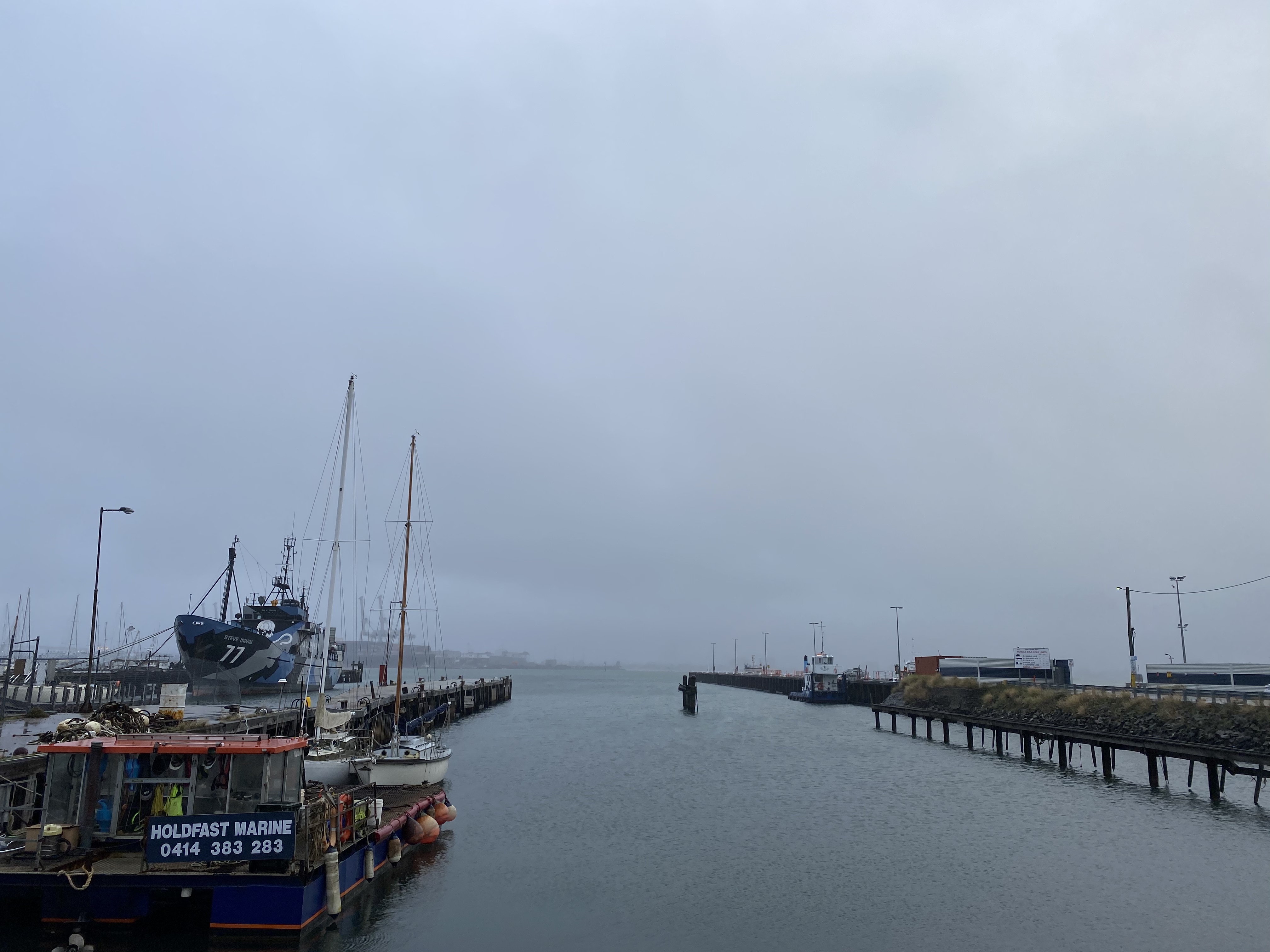
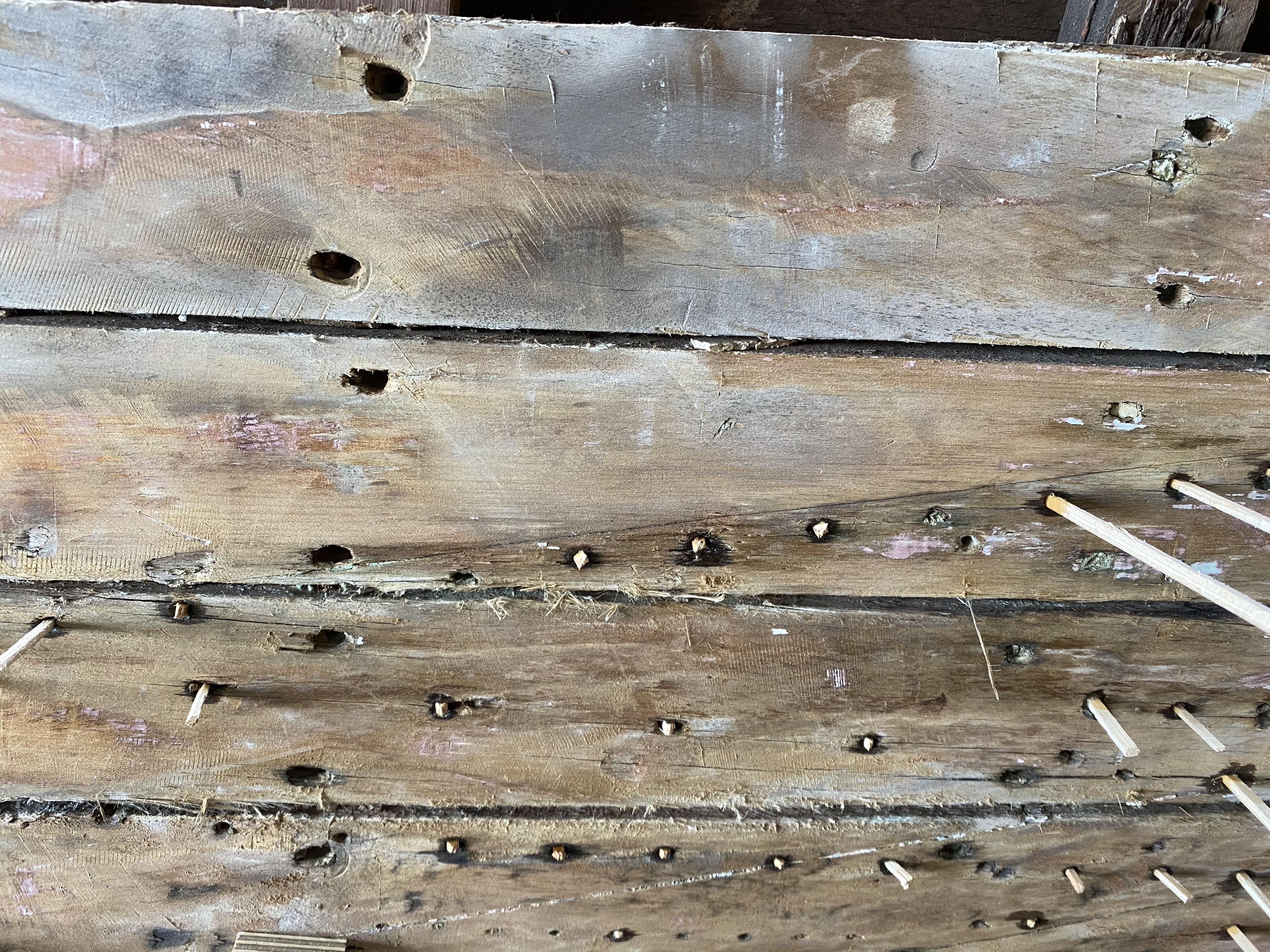
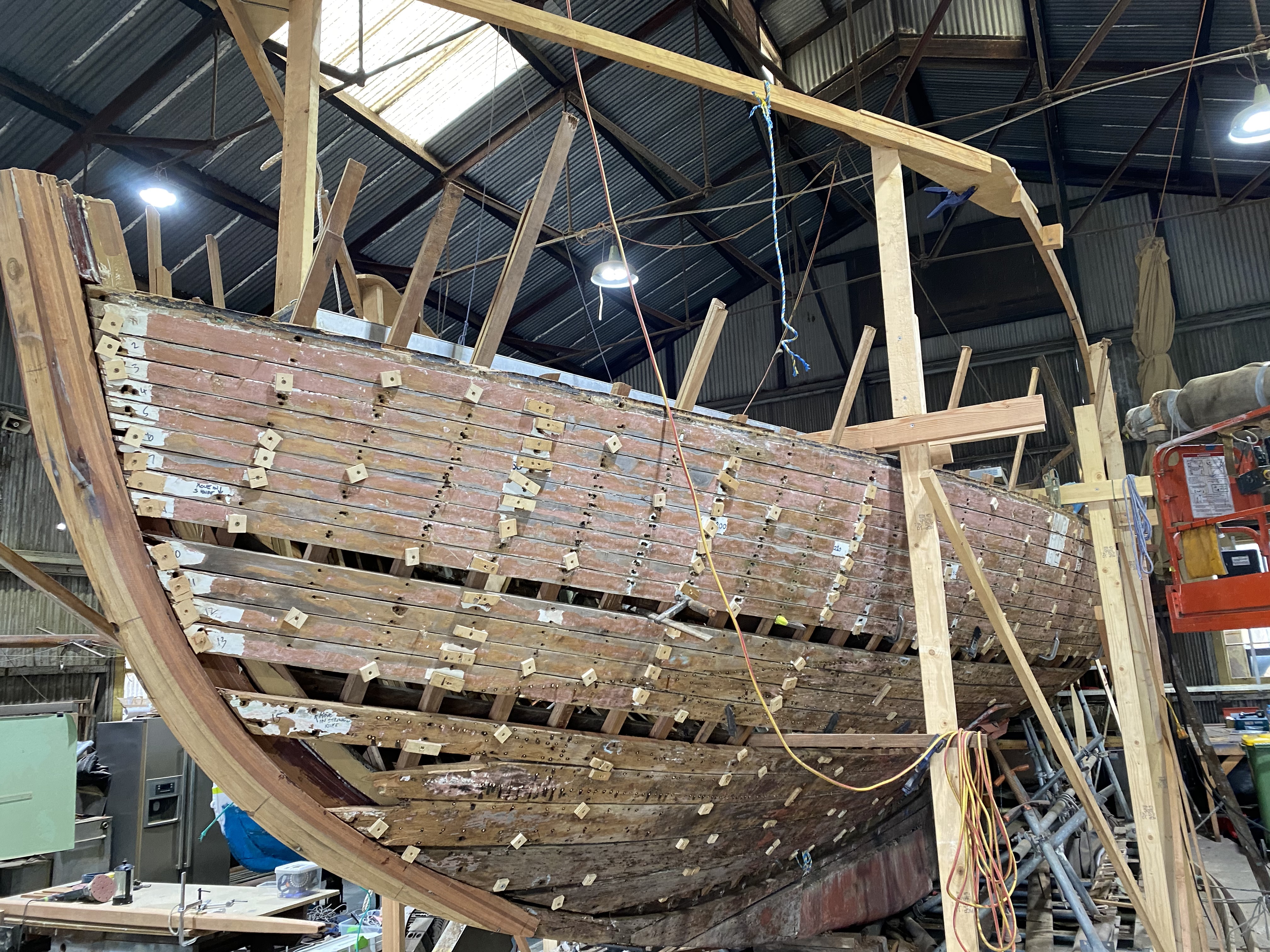
Really only to show current state. Only movement since early December has been to strip most of the paint off, which had naturally suffered. Did reveal the strong preservation characteristics of the underlying kauri pine, without which this project would not be viable (or would be less viable!). While some hood ends are clearly damaged, most of the length of these planks remain intact for reuse in entirety. I am deliberately not showing the starboard side, which has some damage from where the props for backyard storage have punched some sizeable holes in the planking.
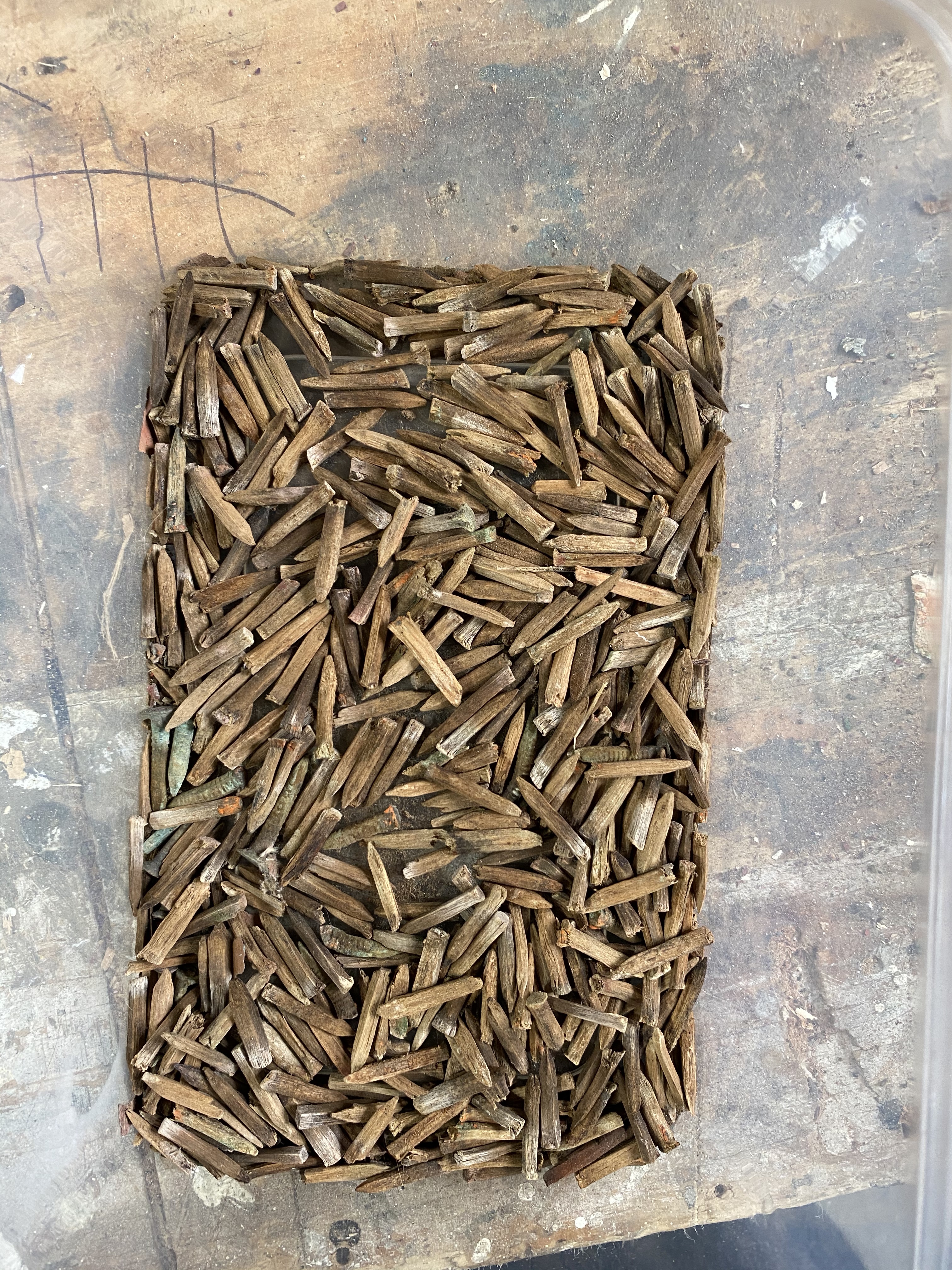
I think it is noted elsewhere, but Wyruna was originally constructed with a copper sheath, for rot and marine growth protection/prevention. This is a little unusual for a South Australian location, and it was speculated in a later article that this was because it was intended to spend some time in the somewhat brackish water of American River, on Kangaroo Island. Not sure if this is true. Regardless, the sheath was removed, leaving a legacy of thousands of small nail holes. These were originally filled, and now need refilling! The image above shows just a small number of the thousands of plugs that were once in the hull. Many have fallen out, but many more remain in the hull and require removal. A large number have partially squeezed out, as the timber has dried and contracted around them. I am into the process of cutting appropriate size sticks, for dipping into epoxy and breaking off once inserted. We also need to deal with the additional fastening holes, that were added later, for the planks above the waterline (top 10 or so planks). These additional fastening holes can be seen in the image directly above this one (Port Bow – looking aft) – from the third rib back and carried through to the stern.
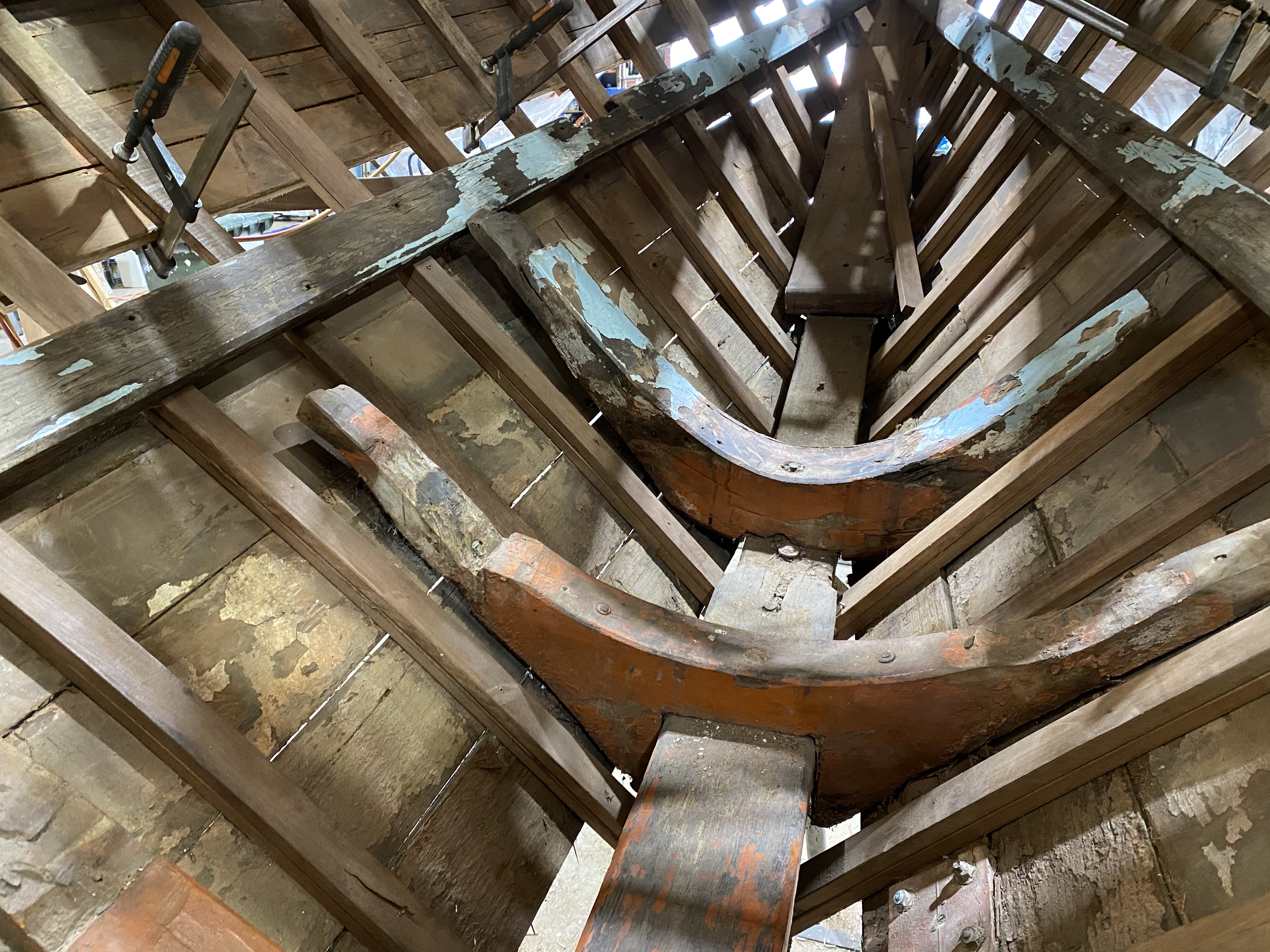
An update view showing the ribs for the forward section of Wyruna largely completed during the week ending 14 May 2021. This has cleaned up the look of the interior (aesthetically), but also stiffened the structure considerably. More to go!
Having the garboard out has allowed the accumulated dirt, dust and rotted timber out of the bilge. Which was a ‘feature’ of previous internal photos.
Lying under the spare rib timber towards the bow, is the back of the newly laminated apron, replaced with a thicker/deeper version to allow for new fastening points at the hood ends. Difficult to see here, and I’ll try to get a new photo.
Original floors and keelson showing here. Ferdi has commented that the keelson is an unusual feature for a smaller timber boat such as Wyruna, being more of a large vessel feature.
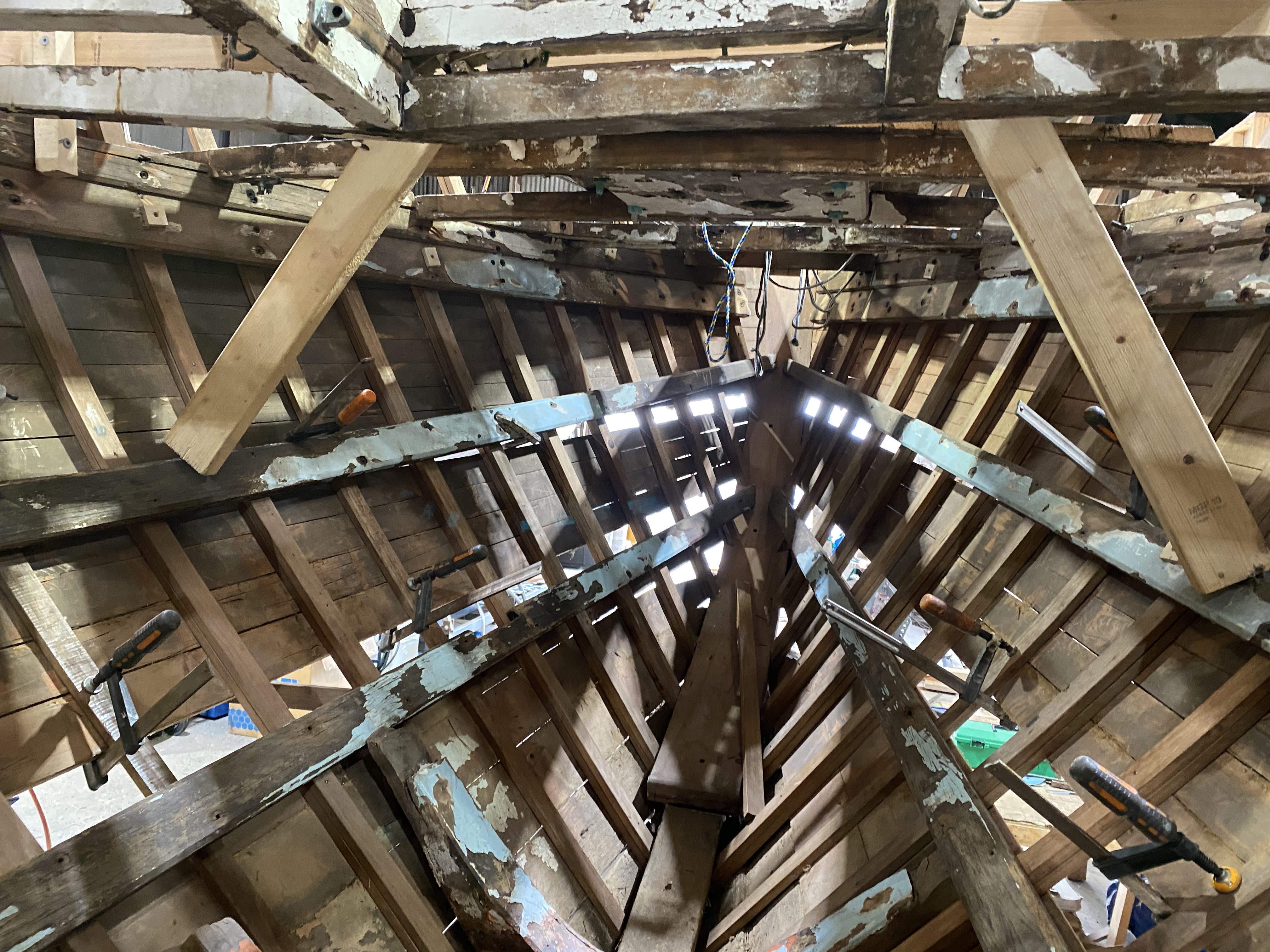
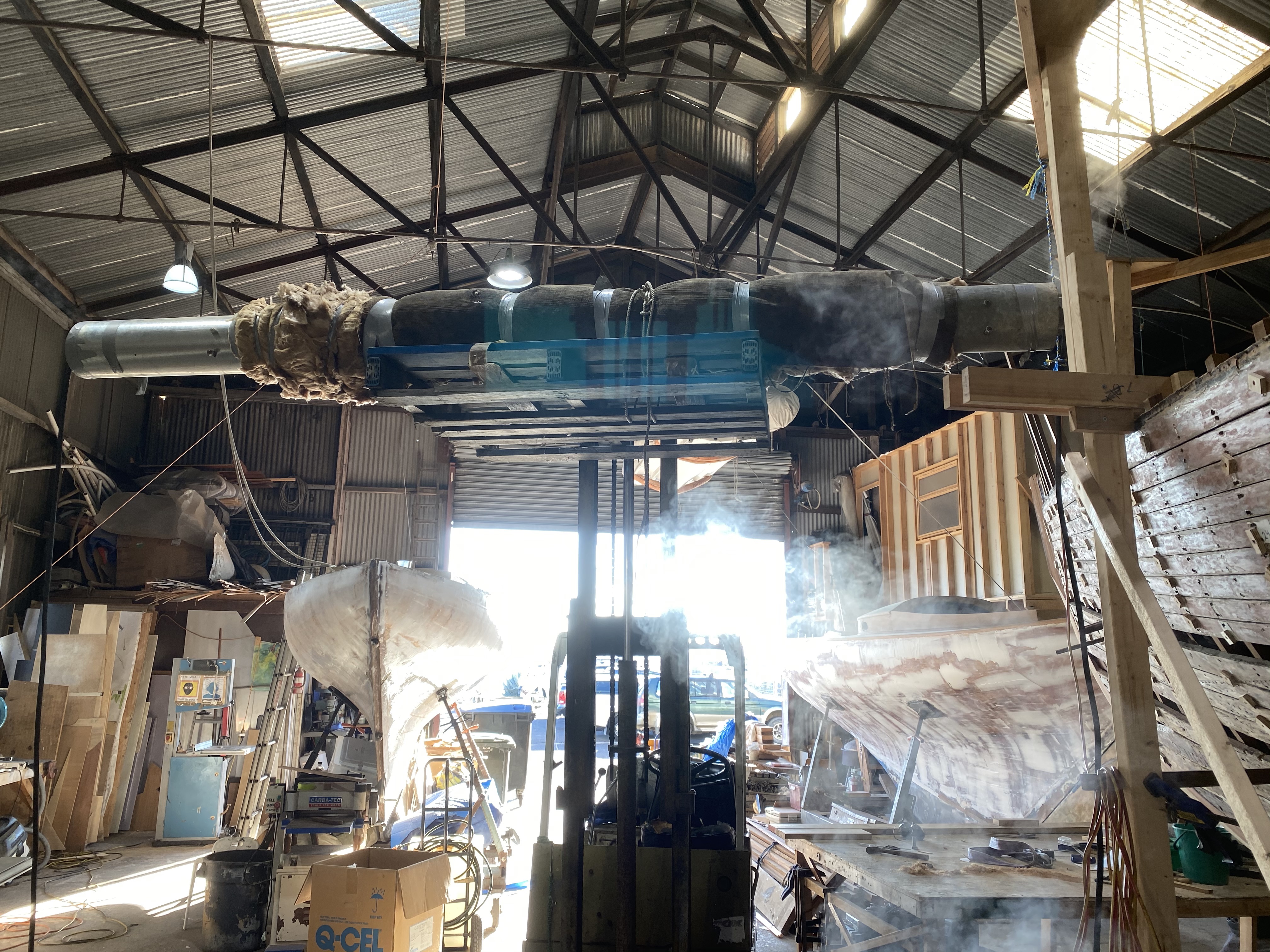
Early start on 12 May, to get going on some tricky ribs, being the longer double curved frames in the centre and aft quarter of Wyruna. The steamer is mounted on a pallet, using the forklift to raise the height so that the steamed timber can be drawn directly onto the work height – which is effectively the deck of the vessel, although consisting mainly of scaffold boards and temporary timber framing. Takes some nimbleness once working, as the timber cools in a minute or so.
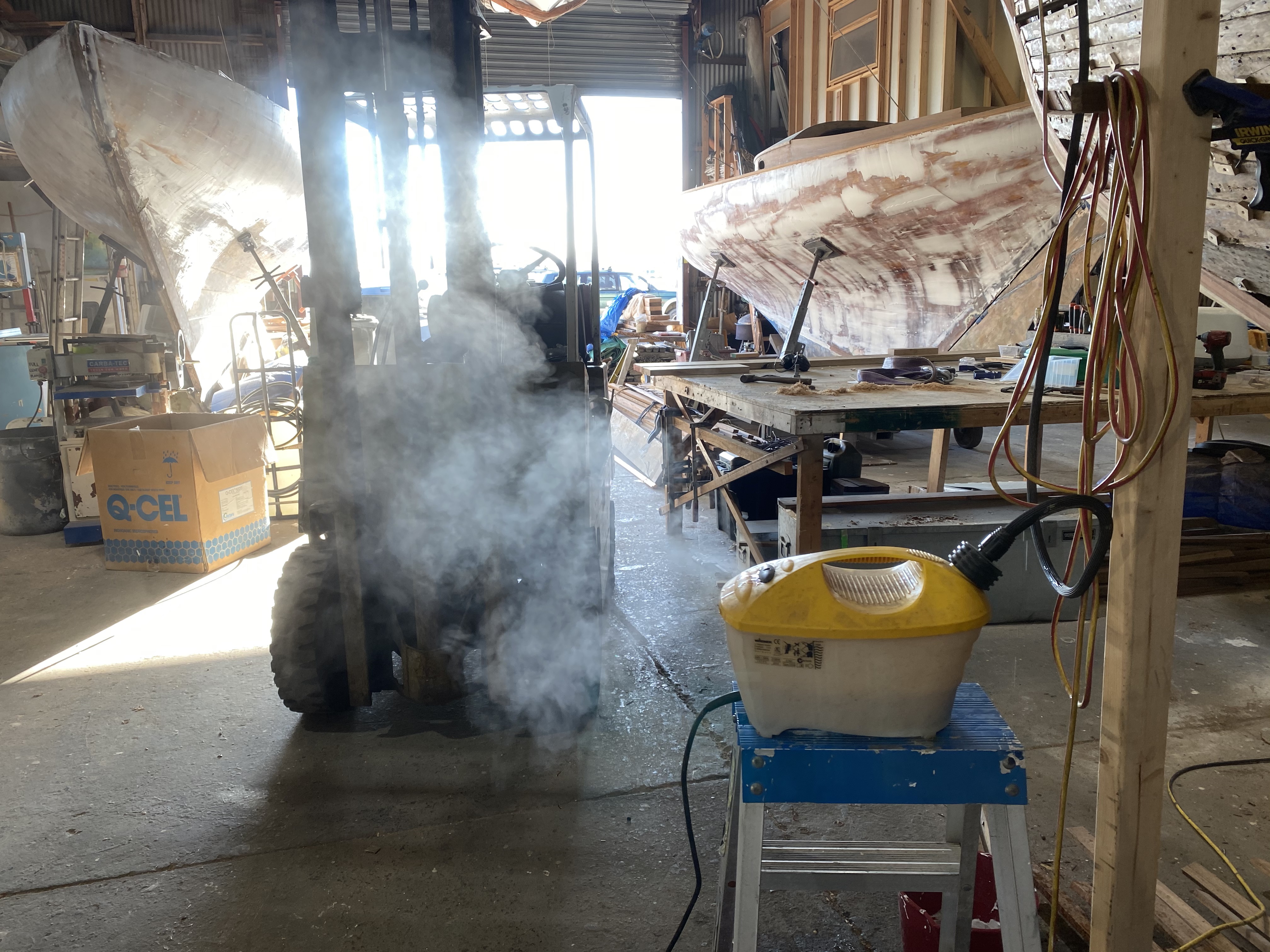
One of the wallpaper steamers used (of two) that are doing a great job. Timber comes out hot, and quite flexible after 30 to 40 minutes. This particular steamer was leaking a bit (as the image shows), and once it was maintained, performance improved.
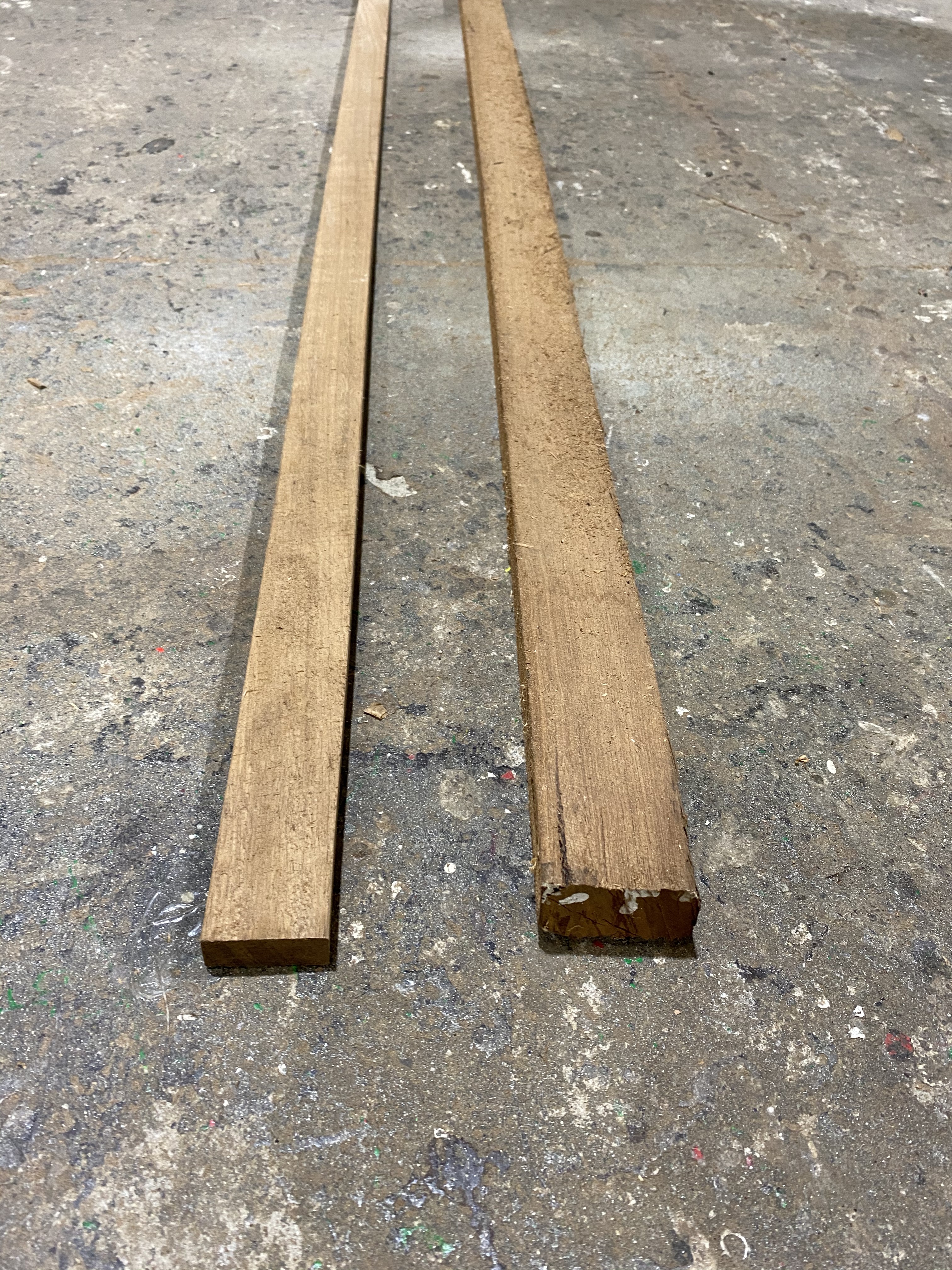
This image posted previously, and showing the spotted gum being used for the new ribs. As delivered on the right, machined and dressed on the left. I’ll check the dimensions later (can’t recall), but they are slightly wider than the originals, which do add a bit of weight to the look, in addition to some additional strength and durability. They were delivered unseasoned, which Ferdi has learnt provides for easier bending. Although they have now had a summer and autumn to dry, it does not seem to be overly effecting performance – we are cracking about 1 in every 8 for now.
